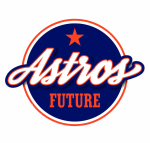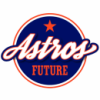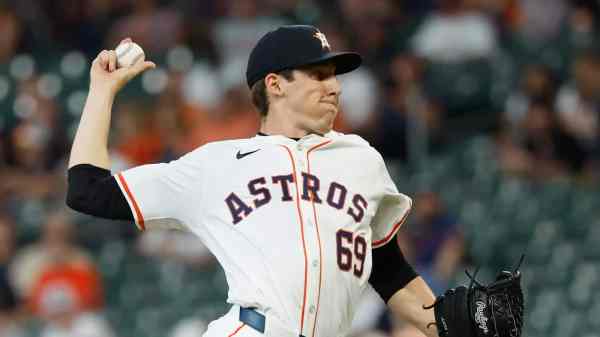Spring Training: The Case for In-House Rotation Options
With Spring Training games now only about a month away, we can officially begin to look forward to the Astros’ young pitchers as they compete for roster spots.
It’s no secret that the fifth spot in the Astros rotation is up for grabs. As currently constructed, Verlander/Greinke/McCullers/Urquidy appear to be set as 1-4. Jeff Luhnow indicated that McCullers may wind up with an innings limit, but with Luhnow gone and so much uncertainty it’s hard to pinpoint how many innings will need to be filled. Here, I’ll be detailing a few names to watch out for in March as they compete for the last rotation spot, inning mop-up due to injury, or possibly a bump into what is becoming a quickly crowded bullpen.
Front-runners
Brad Peacock – Peacock is the only known commodity with experience as a starting pitcher. However, he has been much more effective out of the bullpen than as a starter in recent years, and also has never pitched more than 130 IP in his seven-year tenure with the Astros. Peacock began 2019 as a rotation piece before getting injured, throwing 85 IP before the All-Star break to the tune of a 4.13 ERA (4.42 FIP). In that time, he posted a 3.56 K/BB ratio with a 9.88 K/9. He made it through the 6th inning in 11 of his 15 starts, and the Astros should be looking for effective inning-eating more than anything else. Peacock is certainly option 1A for the rotation, but Spring Training could change some things up, and the bullpen looks a lot more effective with him in it if somebody else can step up into the fifth spot.
Austin Pruitt – The Astros recently acquired RHP and hometown kid Austin Pruitt from the Tampa Bay Rays for OF prospect Cal Stevenson (Came over from TOR in the Derek Fisher trade) and RHP Peyton Battenfield (Whom you can read about here.) Pruitt is intriguing for many reasons, but most notable is his rapid improvement in peripherals from 2018 to 2019. Despite a 4.65 ERA (3.99 FIP) in 2018 and a 4.4 ERA (4.26 FIP) in 2019, Pruitt saw his fastball spin rate jump from the 62nd percentile of the league to the 82nd percentile, increasing at least 100 RPM on both his 4-seam fastball and sinker. That jump also corresponds to a 5.8% jump in his K% from 2018 to 2019. His curveball, too, is in the 98th percentile, at 3000 RPM, and sharp. The hyperlinked curve clocks in at 85 mph. Pruitt’s 5-pitch profile closely resembles that of 2017 Collin McHugh right down to pitch type, spin rate, and batted ball peripherals. McHugh gradually built his fastball spin on top of his already elite curveball, then developed a slider and ended up with the outstanding 2018 season that we all remember. If Pruitt can continue developing his arsenal, Astros fans can hope for something like a McHugh 2.0. Sometimes, players are just late bloomers.
Contenders
Forrest Whitley – We all know about Forrest Whitley at this point, but Spring Training is going to be more important for him than most. He had an undeniably worrying 2019 in the minors, where control became an issue and he did not perform at the level of his prospect status. However, Whitley dominated the Arizona Fall League, leading the league strikeouts. Last spring, we saw him top at 96 in limited Spring Training innings. In my time watching his starts with the Hooks this year, he sat 95-97 mph, touching 98.2 multiple times this fall as well as a curveball consistently over 3k RPM. It’s worth noting that keeping Whitley down in the minors until April 25th will keep an extra year of team control attached to him, so even if you see a terrific spring training line the new GM could give Forrest the Kris Bryant treatment.
Rogelio Armenteros – Astros fans, we saw a little bit of what Rogelio Armenteros can do last year. MLB.com’s assessment states that Armenteros has “has one of the highest floors among the system’s pitching prospects”, and it’s pretty easy to see why. Armenteros does not have anything particularly special in his arsenal, but boasts 4 very solid pitches with a definite plus changeup. He sits in the low 90’s, with a repeatable delivery and the ability to pitch deep into ballgames, something many other pitching prospects lack. At the age of 25, and having spent the last three seasons in AAA, he will never be more MLB ready, and he was perfectly serviceable last year, posting a 4.00 ERA (2.77 FIP) over 18.0 major league innings. Something interesting to keep tabs on in spring training is how effective his curveball was in his short MLB stint last season, resulting in a 37.5K% and only a .156xwOBA on the curve. MLB.com scouts grade the curve as his worst pitch, but if he gets production out of it like that he can be an excellent back-end rotation option.
Cristian Javier – 22 year-old Christian Javier is often underrated within the Astros fanbase. He and Abraham Toro were named the two Houston Astros Minor League Players of the Year, with Javier taking home the pitcher honors. Javier began the year in Advanced A-Ball, and ended the year all the way with the AAA ballclub, with a combined 1.74 ERA across 113 innings, and a combined FIP under 3. He is a flyball and strikeout pitcher, relying on his plus fastball that can run up to 96, and two plus breaking pitches in a hard slider and slower curve. Javier can benefit from some more time in the PCL to brush up and refine his control, having spent so little time above AA, but if he has an electric spring training or injury warrants a quick promotion, he is on the short list.
Long Shots
Francis Martes – There’s not much to say about Francis Martes, but I’d like for this to serve as a reminder to keep an eye on him in spring training. After a rough major league stint and then getting popped for PED’s through his tommy john surgery rehab process, his status as a prospect crumbled. However, this is a former top prospect – the arm is still there, and if Martes can get on the right track in spring training, he can start to build up his case again as a potential rotation or bullpen option. Remember, he’s still only 24 years old.
Framber Valdez – Framber was given his opportunity last season, and his control issues proved to be too much for him to stick in the rotation. I think we all remember the June 26th outing against the Rangers in which he was unable to get through the first inning. However, he still has that electric curveball in the 97th percentile of spin rate, and his overall MLB numbers are not bad enough to write him off completely – 4.60 ERA (4.87 FIP), and 8.7 K/9. The stuff is there (look at that movement!). However, the command has to be better, and the outrageous 5.7 BB/9 would need to improve.
Overall, I hope I’ve succeeded in sharing a few names that we as fans can be excited about watching in the days of spring. One of the most fun aspects of the sport is seeing the ways young or overlooked guys can step up and be a difference maker.
Be sure to subscribe to receive weekly updates on the Astros minor league system. Also be sure to follow on Twitter, @AstrosFuture, and like my Facebook page, facebook.com/AstrosFuture.
**Photo Credit: Getty Images**


















